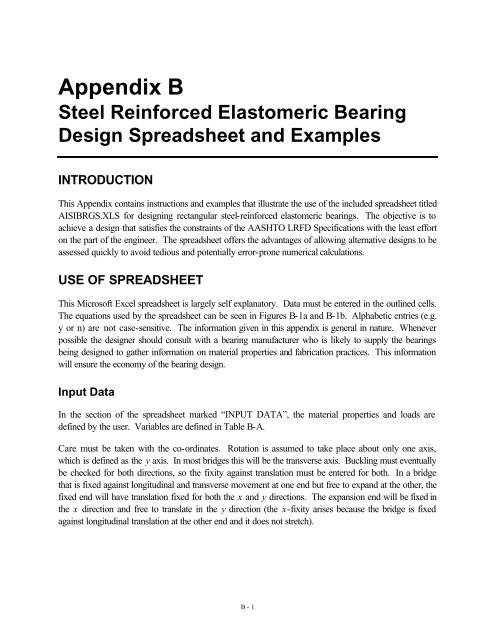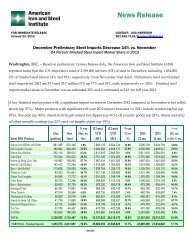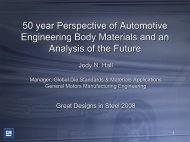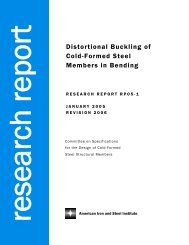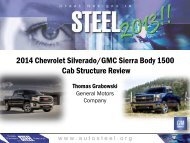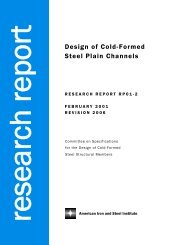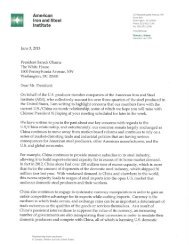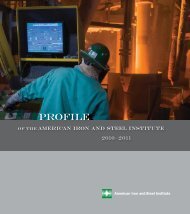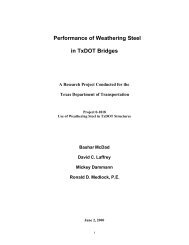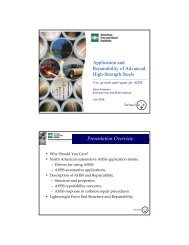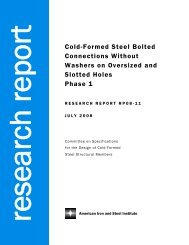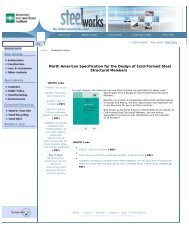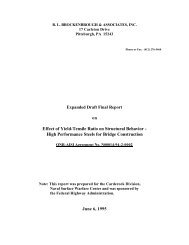Steel Bridge Bearing Selection and Design Guide (Part 3)
Steel Bridge Bearing Selection and Design Guide (Part 3)
Steel Bridge Bearing Selection and Design Guide (Part 3)
Create successful ePaper yourself
Turn your PDF publications into a flip-book with our unique Google optimized e-Paper software.
Appendix B<br />
<strong>Steel</strong> Reinforced Elastomeric <strong>Bearing</strong><br />
<strong>Design</strong> Spreadsheet <strong>and</strong> Examples<br />
INTRODUCTION<br />
This Appendix contains instructions <strong>and</strong> examples that illustrate the use of the included spreadsheet titled<br />
AISIBRGS.XLS for designing rectangular steel-reinforced elastomeric bearings. The objective is to<br />
achieve a design that satisfies the constraints of the AASHTO LRFD Specifications with the least effort<br />
on the part of the engineer. The spreadsheet offers the advantages of allowing alternative designs to be<br />
assessed quickly to avoid tedious <strong>and</strong> potentially error-prone numerical calculations.<br />
USE OF SPREADSHEET<br />
This Microsoft Excel spreadsheet is largely self explanatory. Data must be entered in the outlined cells.<br />
The equations used by the spreadsheet can be seen in Figures B-1a <strong>and</strong> B-1b. Alphabetic entries (e.g.<br />
y or n) are not case-sensitive. The information given in this appendix is general in nature. Whenever<br />
possible the designer should consult with a bearing manufacturer who is likely to supply the bearings<br />
being designed to gather information on material properties <strong>and</strong> fabrication practices. This information<br />
will ensure the economy of the bearing design.<br />
Input Data<br />
In the section of the spreadsheet marked “INPUT DATA”, the material properties <strong>and</strong> loads are<br />
defined by the user. Variables are defined in Table B-A.<br />
Care must be taken with the co-ordinates. Rotation is assumed to take place about only one axis,<br />
which is defined as the y axis. In most bridges this will be the transverse axis. Buckling must eventually<br />
be checked for both directions, so the fixity against translation must be entered for both. In a bridge<br />
that is fixed against longitudinal <strong>and</strong> transverse movement at one end but free to exp<strong>and</strong> at the other, the<br />
fixed end will have translation fixed for both the x <strong>and</strong> y directions. The expansion end will be fixed in<br />
the x direction <strong>and</strong> free to translate in the y direction (the x-fixity arises because the bridge is fixed<br />
against longitudinal translation at the other end <strong>and</strong> it does not stretch).<br />
B - 1


